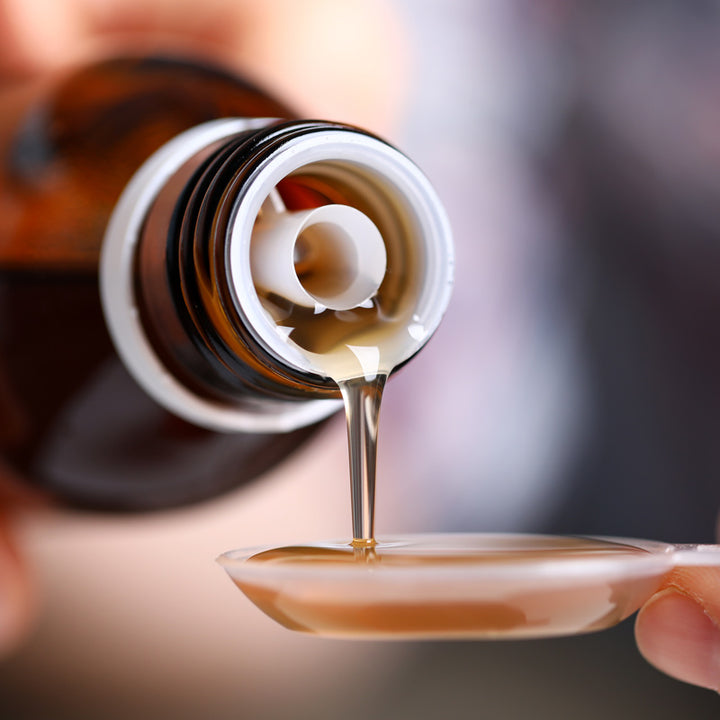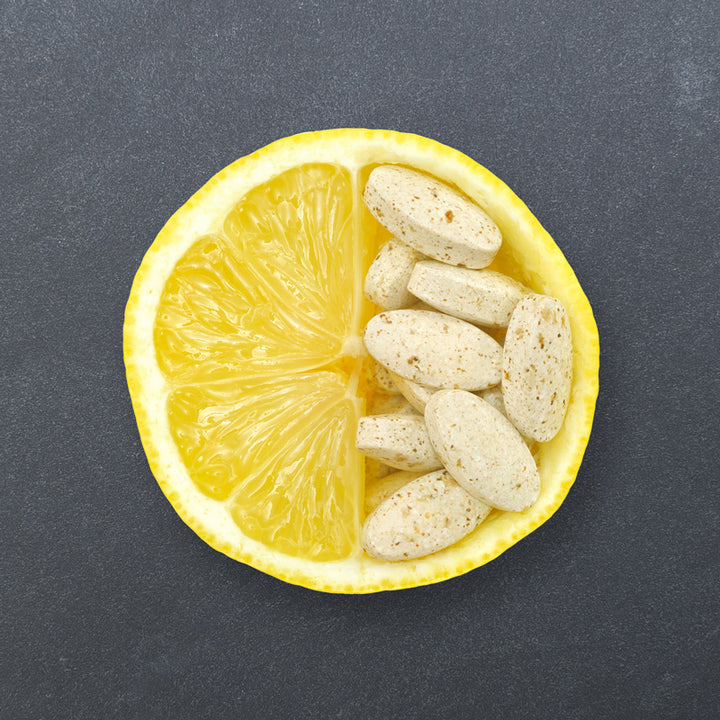The Cold and Flu Season is Upon Us! Is your immune system ready for an attack?
The most common infections, including colds, are spread not through the air, but by the hands, specifically under the fingernails, to the nose, eyes, and mouth. A runny nose is your body’s attempt to cleanse the waste. At the first sign of the mucus going clear to cloudy, it is time to act. Your body is being overwhelmed and is not able to cleanse waste anymore. Instead, it has become a storehouse for viruses and bacteria. Get rid of the mucus and you rid yourself of bacteria, infection, and irritation that can drain the strength of your immune system.
You can reduce your chances of getting bacterial infections by keeping your fingernails cut short and use a nailbrush. A University of Georgia study found that fingernails harbor 90% of the bacteria on the hands. The Centers for Disease Control and Prevention’s hand hygiene guidelines recommend that natural nails only exceed ¼ inch past the fingertips. Using a nailbrush is effective in removing bacteria but is largely ineffective with long nails. Another tip is to blow your nose into a clean tissue and repeat until there is no more mucus in your nasal passage. This way, you slam the doors to germs.
Keep a hand sanitizer in your purse, car, and office and use it throughout the day when you do not have access to soap and water or traveling. You can use it to wipe off door handles in public restrooms, ATM machines, and places where you are exposed to germs from others.
Vitamin C is Proven to Help
The U.S. Department of Agriculture discovered the sad fact: most Americans are not only failing to get optimal nutrition but are deficient in many nutrients needed to strengthen the immune system. At least 1/3 of us consume less than 70% of the Recommended Daily Allowances for vitamin A, vitamin C, vitamin B1 (thiamine), vitamin B2 (riboflavin), vitamin B3 (niacin), vitamin B12 and the minerals calcium, magnesium, zinc, and iron.1 Considering the fact that the RDA is too low, to begin with, this is very telling indeed.
Of all the vitamins, vitamin C with bioflavonoids is perhaps the best-known immune booster. It is well established that vitamin C is vitally important to healthy white blood cells. If you didn’t believe it before, pay attention to this! Since 1971, 21 placebo-controlled studies have been done evaluating vitamin C’s effect at a dose 1-4 grams per day on the common cold. In every one of these 21 studies, vitamin C reduced the duration and severity of symptoms of the common cold by an average of 23%.2 Wide ranges of other benefits have also been recognized, but we publish that information in upcoming blogs.
How it works: Vitamin C is an antioxidant. This means it prevents the destruction of healthy cell tissue. Researchers have noted that during a cold or flu, a large number of neutrophils – bad guys – occur in the body. Neutrophils release large amounts of oxidizing materials that can damage cell tissue. What scientists have noted is that during a cold or flu infection, large amounts of vitamin C is used up. As the cold progresses, there is a significant decrease in vitamin C concentration.
Harri Hemila, a researcher with the University of Helsinki, Finland, did his own studies of this process and believes the body suffers for it. He believes 6 grams (6,000 milligrams) a day of vitamin C during a cold or flu can maximize the body’s battle, noting that the diet of our ancestors contained 0.4-2 grams (400-2,000 mgs) of vitamin C per day.3
In his book, How to Live Longer and Feel Better, two-time Nobel laureate Linus Pauling, Ph.D., championed the use of vitamin C for preventing and helping to overcome colds.
Robert Cathcart III, M.D., a California physician, had successfully treated over 15,000 patients with massive doses of vitamin C; curing viral pneumonia, mononucleosis, influenza, colds, hepatitis, shingles, and cold sores. He developed a guideline for practical application of vitamin C which he referred to as “bowel tolerance”. The individual's own body will determine how much vitamin C it requires. The cutoff point is determined by the onset of diarrhea. The tolerance level for each individual differs. Some days you can tolerate more, some days less. A cold can be labeled a 20-30 gram cold, or 60-gram flu, according to how much a person can take before they reach bowel tolerance.
Power-Pack Vitamin C with Bioflavonoids
Now you know that vitamin C, while it can’t cure a cold or flu, can keep you from ending up in bed. It turns out there’s even more you can do. You can make sure your vitamin C contains bioflavonoids. Like the B vitamins, which work together in B-complex formulas, vitamin C and bioflavonoids should be considered a C-complex.
At the Creighton University School of Medicine, Omaha, Nebraska, a group of nurses was given tablets containing two substances. The nurses were checked for one year, as was another group which received a placebo. The nurses receiving the vitamin C and bioflavonoids had 55% fewer colds than the placebo group, and their infections lasted an average of 3.9 days, compared to 6.7 days for the placebo group.4
Quercetin, a particularly potent bioflavonoid, can be a very effective nutritional antihistamine.5 It has been shown to be effective against many viruses, including viruses that cause the flu. 6
Benefiting from Botanicals
We have all seen our heartstrings pulled by the sight of a child with a cold. What happens is that the mucus that forms from a cold or allergy thickens, perhaps from not enough water in the body, and stays in the nasal cavities long enough for bacteria to develop. It’s the proliferation of bacteria, trapped inside the tissue pockets, that can create pain and inflammation. Anything that kills the bacteria will alleviate the infection. The key to this is that the medicine must be circulated systemically, through the blood, and must only kill the bad bacteria, leaving the good bacteria to do its job. That’s where the supplement garlic comes in.
Garlic is a powerful and effective detoxifier and immune system booster. When garlic is reduced to a supplemental form the toxic effects of large amounts of fresh garlic are eliminated. Supplemental garlic is odorless too, so you don’t have to worry about “garlic burps”. If you choose to use raw garlic, don’t cook it. Heat destroys many of the natural enzymes.
Tea made from elderflowers helps clear congestion in the respiratory tract. It is also effective for sinus, throat, and inner ear infections. The action of the flowers is enhanced if combined with hyssop and yarrow flowers. For lung congestion and asthma, mix elderflowers with mullein flowers and chamomile flowers. These teas are rather bitter, but adding peppermint leaves improves the taste. Gargling a cool tea made from elderflowers soothes a sore throat.
Besides its other healing qualities, elder contains vitamin C, vitamin A, and bioflavonoids. Four ounces of elderberries contain about 35 milligrams of vitamin C and 600 IUs of vitamin A. Elderflowers contain rutin, a bioflavonoid also found in buckwheat that helps the body assimilate vitamin C. 7
Forgotten Nutrient Knowledge
Over 75 years ago scientists first discovered Vitamin A’s value in treating and preventing cold and flu. In 1942, Italian physician Di Salvatore Princi published his study results that showed mice had more resistance to an influenza germ if they were given vitamin A. in 1937, German doctor Torsten Lindquist found that vitamin A content of the blood was drastically lowered in the first 5 days of illness. When the patient began to feel better, the level of vitamin A rose dramatically, even though no vitamin A was added to the diet. His assumption was that it was used in the healing process.8
Vitamin A can work against colds by strengthening and restoring the mucous membranes of the throat, nose, and sinus cavities. The role of mucus is to flush out germs and foreign matter to they can’t hurt and take hold in the system. If membranes are weak and thin, their ability to defend the body is compromised. Vitamin A prevents colds and infections by making sure the membranes within are strong enough to push germs and mucus out and alleviates the symptoms by keeping membranes moist so there is less dryness and pain.9
Like vitamin C, zinc also possesses direct antiviral activity against several viruses that can cause the common cold. In a double-blind clinical trial, zinc gluconate lozenges significantly reduced the average duration of common colds by seven days.10 These lozenges can be purchased at vitamin and health food stores.
Take charge of your seasonal health and give your system the ammunition it needs to be well!
Maximum Living’s Solu-C with Bioflavonoids and green tea, MineralRich, and Antioxidant equip you with an arsenal to help battle the cold and flu season.
Solu-C® Capsules are a source of vitamin C that combines the bioflavonoid benefits of citrus, grape seed, and rutin with the powerful immune-enhancing properties of green tea. Together these nutrients offer a one-two punch of daily antioxidant protection that is unsurpassed!
MineralRich® offers a blend of naturally balanced trace minerals combined with essential macrominerals including calcium, magnesium, zinc, selenium, manganese, chromium, potassium, and silica. 1000 mcg of B-12 and 200 mcg of Biotin (B7) are also added making this synergistic formula complete for optimal health.
Antioxidant – This free radical ravaging formula includes vitamin A derived from natural beta-carotene, vitamins C and E; the mineral antioxidants chromium, selenium, and zinc in combination with a selection of herbal components and the potent mitochondrial amino acids glutathione, methionine, and cysteine. Additional ingredients include the free radical quencher alpha-lipoic acid and the flavonoids ginkgo biloba and grape seed
About this Blog: This blog was created and referenced from the Nutritional Encyclopedia, All Your Health Questions Answered Naturally II, by the late Best Selling Author, Maureen Kennedy Salaman. This manual to health offered information to prove that nutritional supplementation can be as therapeutic as pharmaceuticals.
- ”USDA Study of 40,000 Americans,” Food Technology, 1981
- Hemila Harri, “Does Vitamin C Alleviate the Symptoms of the Common Cold? – A review of Current Evidence,” Scandinavian Journal of infectious diseases, 1994
- Ibid.
- The complete Book of Vitamins, Rodale Book inc.
- Dr. Atkin’s Health Revolution, Houghlin Mifflin co.
- Healing Nutrients, Contemporary Books
- “Respect Your Elder,” Vegetarian Times
- The Health Finder, Rodale Books
- The Health Finder, Rodale Books
-
Murray, Michael, M.d., and Pizzorno, Joseph, N.D., Encyclopedia of Natural Medicine, Prima Publishing


